Figuring out the best way to finish or refinish your floors can be confusing. Do you want to try painting your wood flooring but don't know the advantages and disadvantages? Does painting over hardwood make it look better or worse?
Luckily, we've researched these questions extensively and have the answers below.
For anyone considering painting their wood floors, there are some pros and cons we'd like to go over. These include:
Pros:
- Easy application
- Can improve your wood's aesthetic
- A great alternative to refinishing/staining
- Can hide imperfections in the wood
- Is cheaper than replacing your flooring
Cons:
- Paint doesn't always age well
- Your floors may show wear and tear
- If done incorrectly, your floors can look worse
- Not compatible with all types of wood
- Hard to reverse
Of course, this depends on your wood, the size of your home, and what vibe you're going for. Sometimes, paint can be the perfect solution, while other cases may require a different method.
As we start this post, we will cover all things wood flooring and discuss whether or not you should paint them. If you have older wood floors, need more color in your space, or need additional assistance, we're here to help. With that said, let's dive right into this topic!
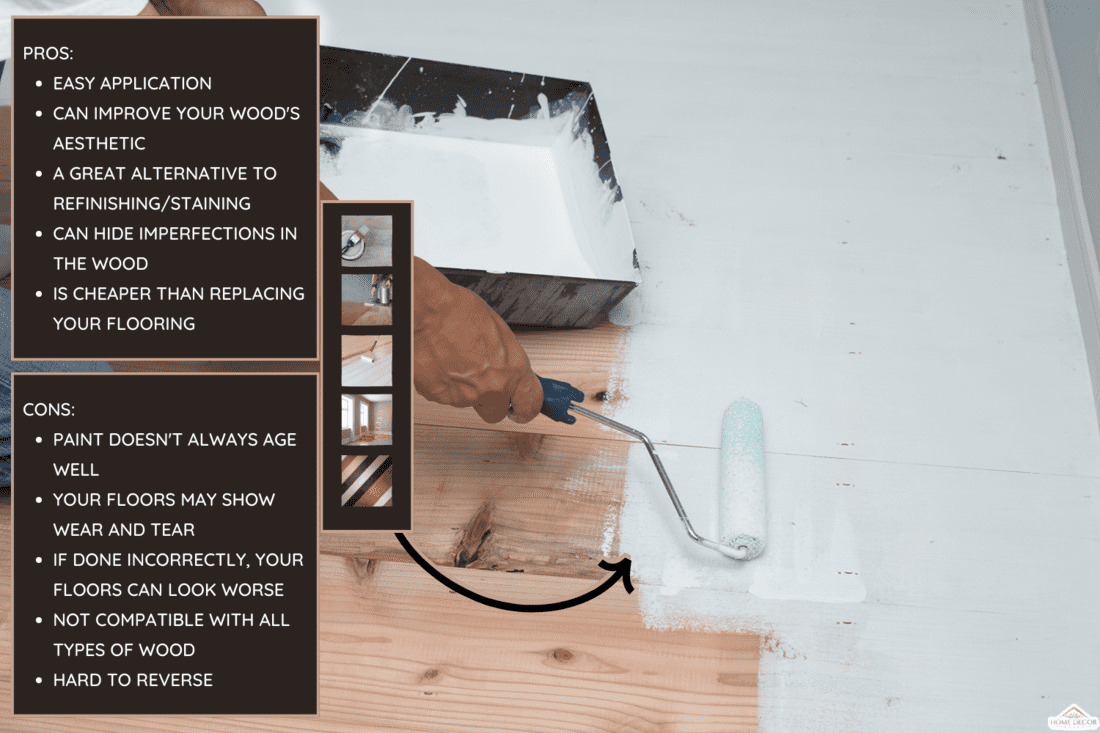
Is It A Good Idea To Paint My Wood Floor?
If your flooring is a bit older and refinishing or replacing it isn't an option, painting could be the next best thing. Generally, painting a wooden floor is more for aesthetics than a structural benefit.
Since paint doesn't hold out like stains or new flooring, you can't expect painting the floor to save it from aging or damage. However, paint is a perfect choice if your wood floors are somewhat healthy and you need to make them look fresh and even.
We sometimes add affiliate links and content that was curated and created by our team with the help of advanced ai tools to help showcase the best design styles.
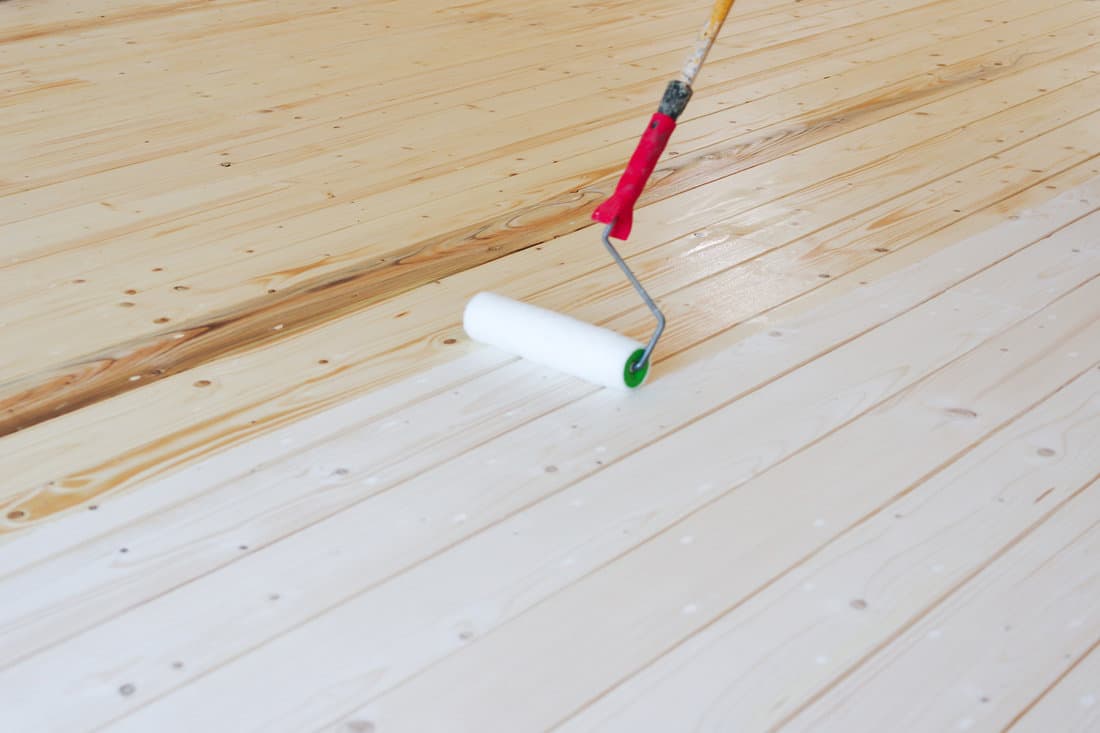
Many DIYers recommend painting wooden flooring instead of spending thousands on replacing it, so from a cost standpoint, it's a great idea.
Furthermore, choosing to preserve your wood flooring means it won't end up in a landfill and can be enjoyed by you can future homeowners.
As we said above, painting over wood floors can hide minor imperfections. So, if your flooring has chips, scratches, or even small cracks, your paint could work to camouflage them.
Should You Paint Or Refinish Old Wood Flooring?
For those with older wood floors, you might wonder if there's a difference between refinishing and painting wood and which is better long-term.
Although people use these two phrases interchangeably, refinishing a wood floor is much different than painting. When you refinish wood surfaces, you have to sand down the top layer and apply fresh stain and lacquer over the existing wood.
Even though this can work a few times, doing this to older wood can damage it and take away its natural beauty. Therefore, painting seems to be a safer long-term bet, as it doesn't require stripping.
Old wood floors hold history and beauty to many design experts. Even if your floor has imperfections, those can add value to the space and your home.
So, why not simply paint over your floors with a breathable formula rather than sand them down to nothing? Again, this all depends on your space and the health of your flooring.
What Are The Pros And Cons Of Painting Wood Flooring?
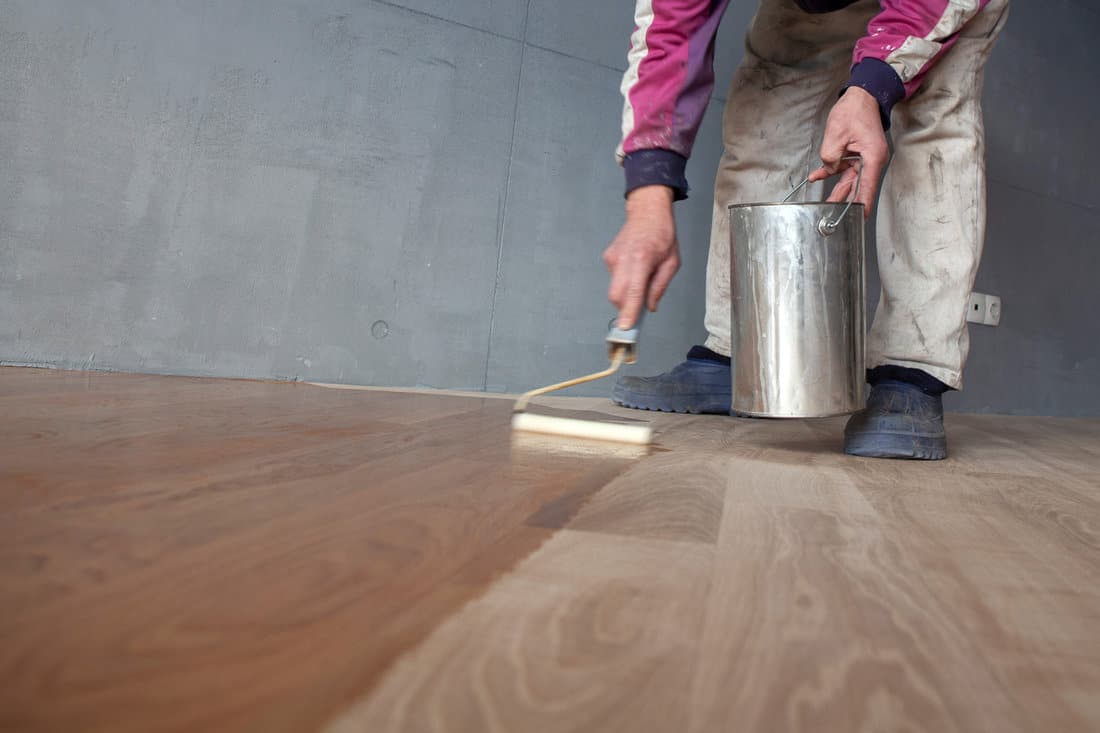
If you're torn between painting or redoing/refinishing your wood floors, it's always good to create a pros and cons list. As we shared above, painting wood has many benefits but a fair share of drawbacks.
A few pros for painting wood flooring include:
- Easy application (usually minimal prep work)
- An improvement to your wood floor's aesthetic
- A great long-term alternative to refinishing and staining
- Works to minimize imperfections in your wood surfaces
- It will cost much less than replacing your floors altogether
Now, let's shift our focus to the cons of painting a wood floor:
- Painted floors don't always age gracefully (can require more upkeep)
- The paint on your wood may attract dirt and show wear/tear
- If you don't prep and paint your floors correctly, they can look bad
- Paint doesn't always work with every type of wood flooring
- It's tough to reverse a painted wood surface
So, looking at the pros and cons of painting wood, you can see it has about an equal amount. However, the pros can outweigh the cons depending on how old your wood is, so that's something to remember.
Many floor paints are created to withstand high traffic, even on wood, so that may not become an issue. Again, you need to search for high-quality products to treat your floor and follow the instructions closely.
What Kind Of Paint Do You Use On Wood Flooring?
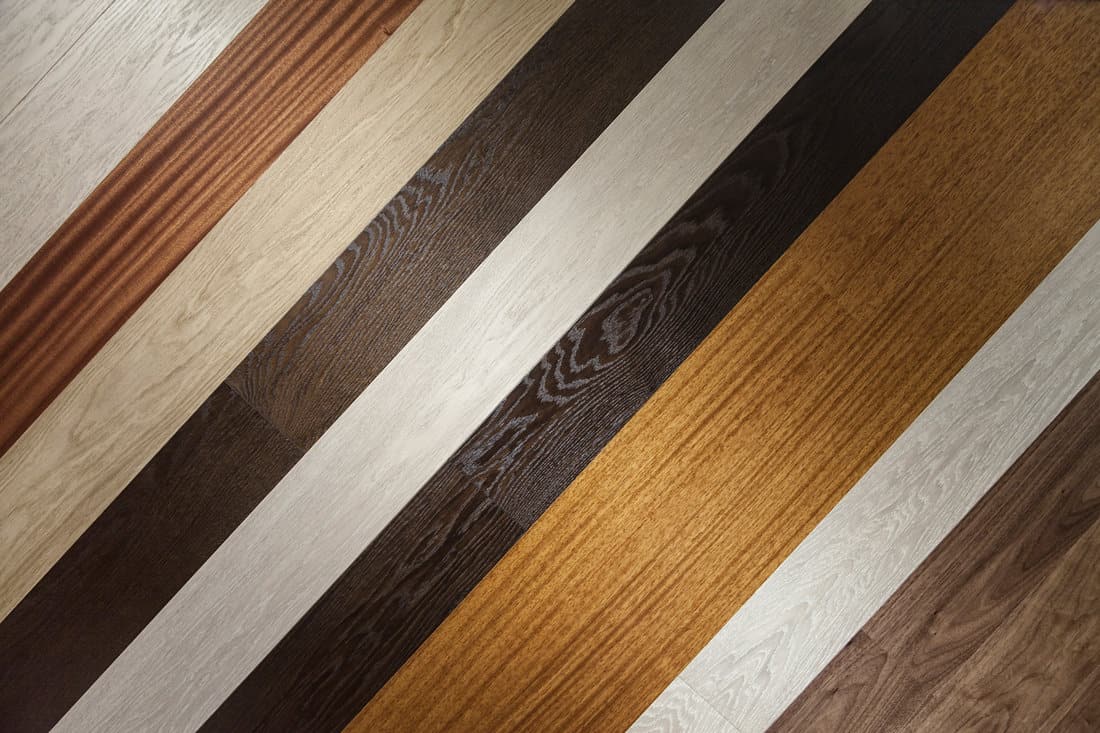
When it comes to choosing a paint formula for your wood floors, this can be tricky. Many professionals say you want to use standard oil-based porch and floor paint or oil-based enamel.
Although these paints can have strong smells, they'll withstand traffic much better. If you use low-durability floor paint, you will likely need to redo it every year or two, which can become frustrating.
On top of that, you don't want to use paint that isn't equipped to handle foot traffic. Even if your house doesn't see too many people, low-quality paint formulas can break down after a few months of being walked on.
However, if you want more eco-friendly, low-VOC paint in your space, you can choose a different water-based formula. Just remember: it won't last nearly as long as an oil-based option.
That goes for almost any surface, inside or out, so try and use oil-based paints if possible.
Can I Use Exterior Paint On My Wood Floors?
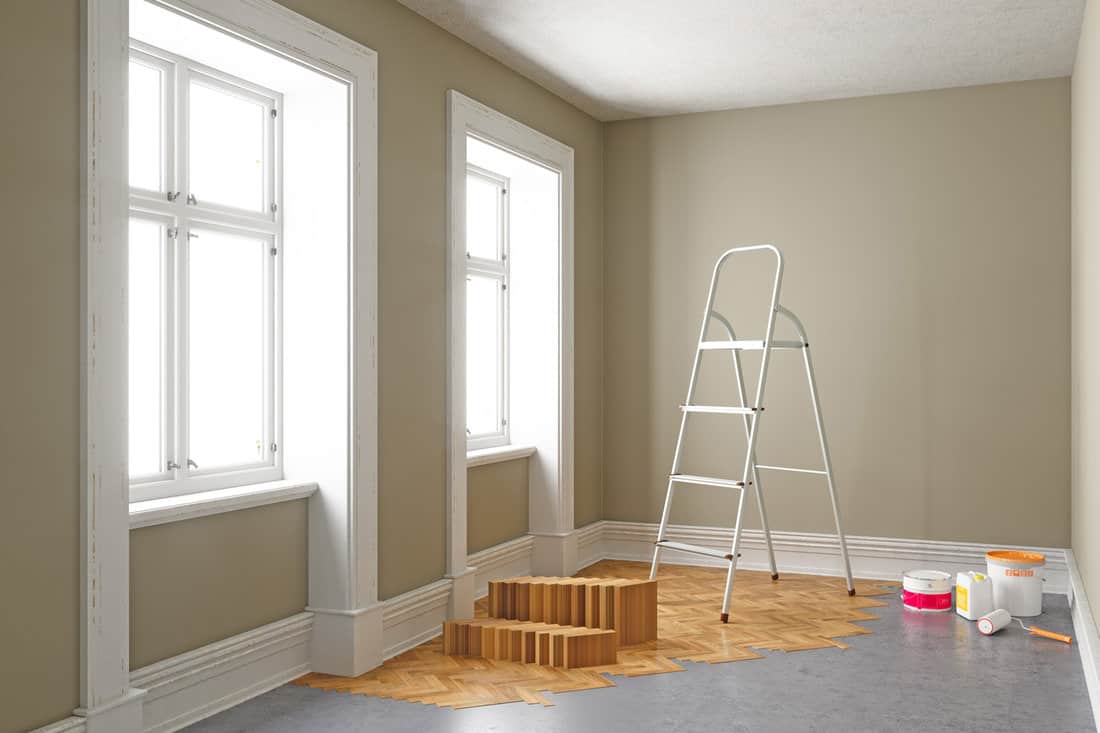
Yes! If you want to choose a super durable formula for your inside wood floors, you can use porch/wood deck paint. Typically, outdoor wood paints and stains handle moisture and foot traffic better than interior options, although they might not be as fancy.
If your wood floor paint has a particular color, you might not be able to find an outdoor product, which in that case, we recommend sticking to an oil-based interior wood paint.
As we said above, the thicker your floor paint's formula, the better it will age.
Especially if you want to protect your older wood surfaces, using durable, high-quality paint is crucial. Regardless of paint type, applying your product evenly with a roller/floor brush is also essential so it goes on nicely.
Sometimes, thicker outdoor/oil paints can be tricky to apply, so that's one thing to remember.
Dura Grip Anti-Slip Paint
This floor paint works on wood, concrete, tile, and metal surfaces, has a non-skid formula, is weather-resistant, holds up against foot traffic, covers up to 300 square feet, and comes in a one-gallon container.
Follow this link to see it on Amazon.
How Do I Paint A Wood Floor?
Now that you know the basics, it's time to paint your wood flooring. Luckily, this is a project you can do on your own, without professional help, although if you're uncomfortable, we recommend contacting a specialist.
To begin, you'll need to gather your materials:
- A high-quality oil-based floor paint
- Primer for your flooring (if it needs it)
- A drum sander (if your floor needs it)
- A paint roller with an extendable arm.
Once you have everything you need:
- Clean your wood flooring and ensure the surface is completely dry.
- Sand your floors and prime them (optional).
- Apply your paint to your roller and start towards the corner of the room.
- Evenly paint your entire wood floor once, then allow it to dry (the timeframe varies).
- If you need a second coat, follow the same pattern you did with your first application.
- Allow your new paint to dry for 48 hours, and then test it before adding furniture.
Again, some wood floors might require additional preparation before painting. If your flooring is dirty, we recommend deep cleaning before sanding, priming, or painting to ensure an even, high-quality final product.
Unlike replacing the floor with a new one, it's crucial to ensure your current flooring is clean and debris-free before pouring paint over it.
What Type Of Paintbrush Should You Use For Wood Flooring?
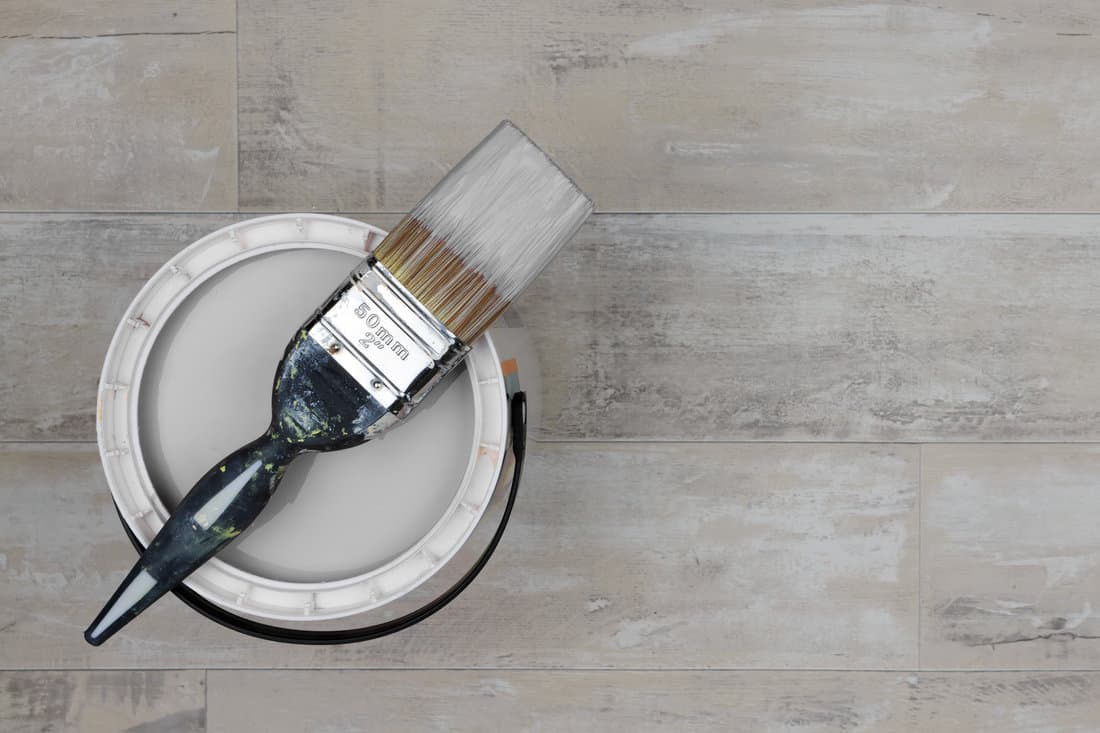
Depending on the look you're going for, you might need to use different paintbrushes. Generally, we suggest purchasing a foam roller with an extendable arm. This will make painting much faster and ensures a smooth, even application.
However, some painting pros recommend natural-bristle brushes to apply floor paint. One benefit of natural-bristle brushes is they provide a smooth finish to hardwood, although they can be harder to maneuver.
So, even though a roller might be easier to handle, a bristle brush typically gives your floor the most professional look. One drawback to using foam rollers is they can give wood a 'stippled' appearance if you rush or don't apply an even amount of paint.
Again, both options will work nicely if you carefully apply an even amount of paint. Worst case, you can try and remove your paint and start over or use a second coating.
To Finish It All Up
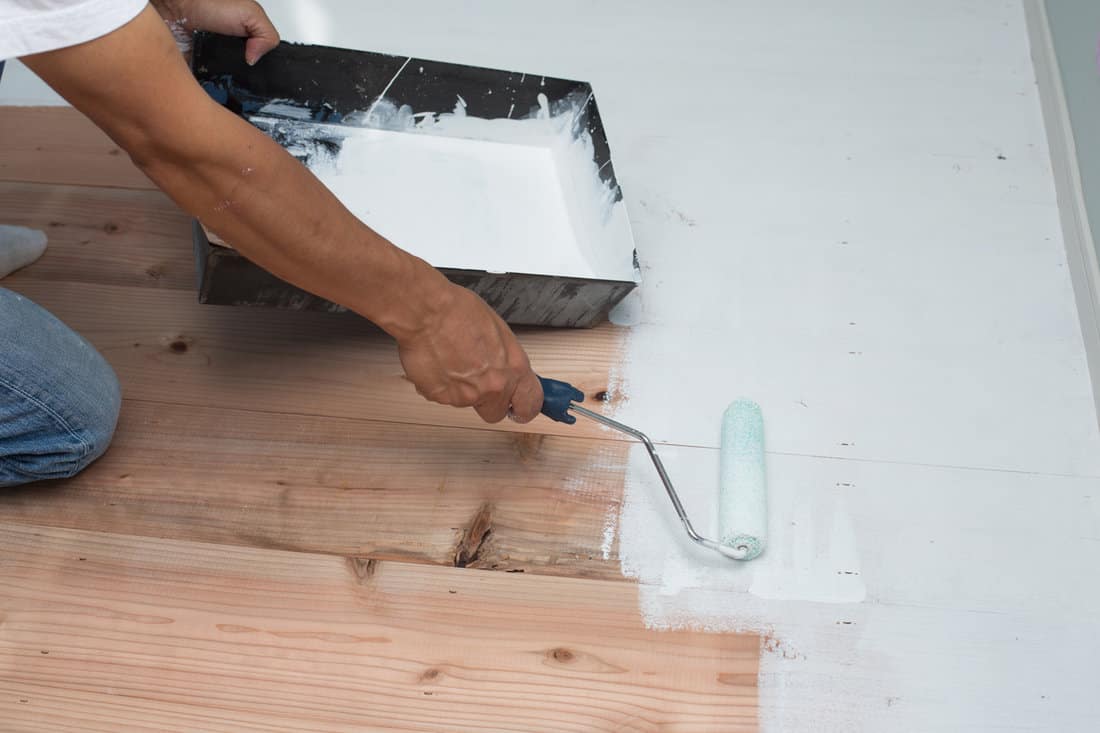
Painting wood surfaces isn't always easy, whether you want to transform an old home into something modern or need more color on your floors. We found that there are pros and cons to painting wooden flooring, so you want to determine if your space is a good candidate.
Generally, painting older wood floors is better than refinishing and should keep them protected. However, paint doesn't always age well and can require more frequent touch-ups.
When painting your floor, grab a natural-bristle brush or foam roller and apply even coats to your wood. The slower and more precise, the better!
Made it this far? Check out these other helpful home articles:
Does Sandless Floor Refinishing Work [& How To]?
15 Great Gray Wood Flooring Ideas [With Pictures!]
What's The Best And Most Durable Finish For Hardwood Floors?

